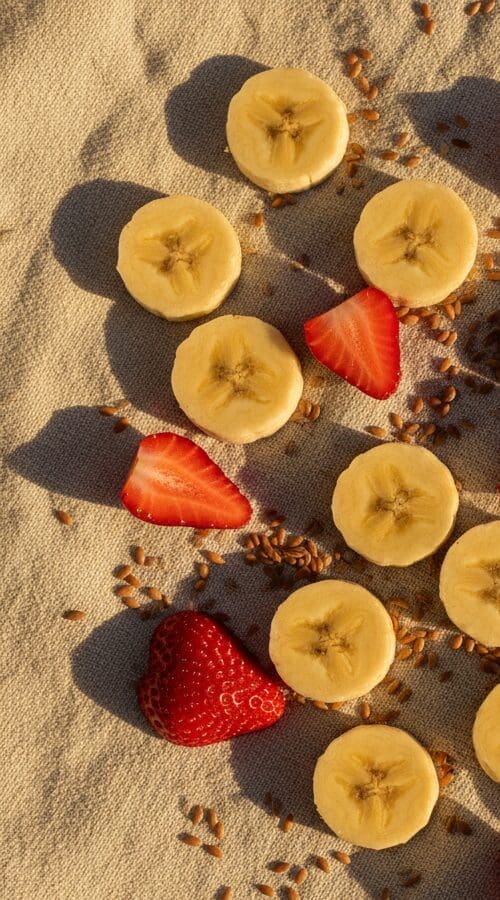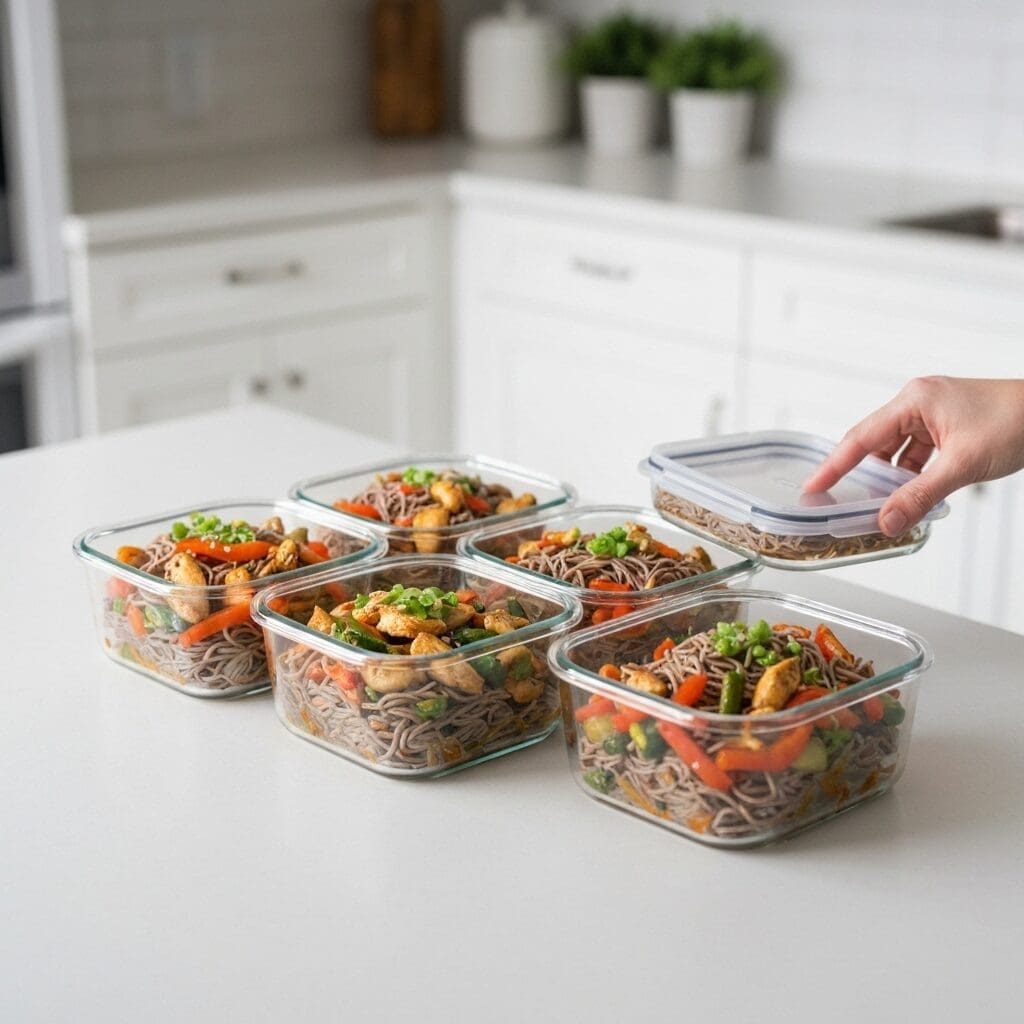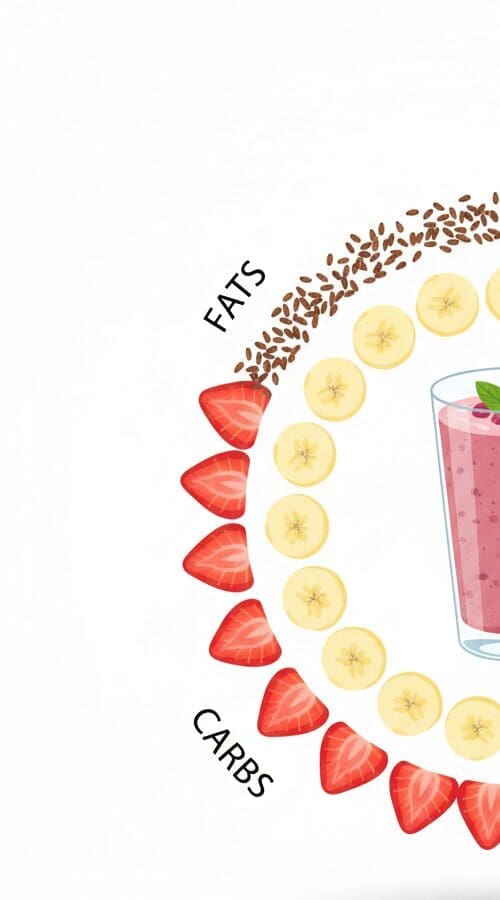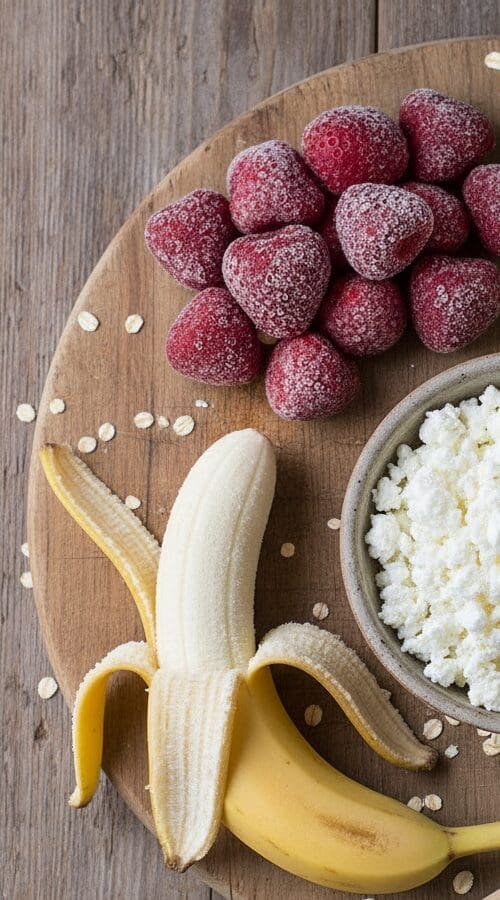High-Protein Cottage Cheese Smoothie Recipe: Creamy Strawberry Delight for Busy Mornings

If you’re looking to boost your protein intake without relying on powders or complicated recipes, this cottage cheese smoothie is a game-changer. As a registered dietitian, I’ve seen how incorporating cottage cheese into smoothies can transform a simple blend into a powerhouse of nutrition.
This recipe combines the mild, creamy taste of cottage cheese with sweet strawberries, ripe banana, and a touch of honey for a dessert-like treat that’s ready in minutes. With 21 grams of protein and 8 grams of fiber per serving, it’s ideal for breakfast, post-workout recovery, or a satisfying snack.
Unlike traditional yogurt smoothies, this version offers a unique cheesecake flavor profile while sneaking in omega-3s from flaxseed. Whether you’re managing weight, building muscle, or just seeking variety, this smoothie aligns with evidence-based nutrition principles for balanced eating.
Let’s dive into why this recipe stands out and how to make it your own.
- Why Choose Cottage Cheese for Smoothies?
- Unlocking the Health Benefits
- Ingredients You’ll Need
- Step-by-Step Instructions
- Customization for Dietary Needs
- Delicious Variation Ideas
- Common Mistakes and Troubleshooting
- Storage and Make-Ahead Tips
- Detailed Nutritional Breakdown
- Serving Suggestions and Pairings
- Frequently Asked Questions
- Explore More Cottage Cheese Recipes
- Conclusion
Why Choose Cottage Cheese for Smoothies?

Cottage cheese has surged in popularity for good reason—it’s a versatile, protein-rich ingredient that blends seamlessly into smoothies, eliminating any unwanted curds or texture issues. According to data from the USDA FoodData Central database, a half-cup serving provides about 14 grams of high-quality protein, supporting muscle repair and satiety throughout the day.
This makes it superior to many fruit-only blends, which often lack staying power. In this recipe, the cottage cheese creates a velvety base that’s milder than Greek yogurt, offering a subtle tang that pairs beautifully with fruits.
If you’ve shied away from cottage cheese in the past due to its lumpy appearance, rest assured: a high-speed blender turns it into pure creaminess. This approach not only amps up nutrition but also reduces the need for added sugars, aligning with guidelines from the American Heart Association for heart-healthy eating.
Unlocking the Health Benefits

This smoothie isn’t just delicious—it’s a nutritional multitasker. Research from the Journal of the International Society of Sports Nutrition indicates that protein-rich breakfasts like this one can enhance satiety and reduce midday snacking by up to 20% (Leidy et al., 2015).
The strawberries deliver a hefty dose of vitamin C—over 100% of your daily needs—boosting immunity and collagen production, as noted by the National Institutes of Health. Bananas contribute potassium for heart health, while ground flaxseed adds omega-3 fatty acids, which studies link to improved gut health and reduced inflammation (Hasler, 2009, Advances in Nutrition).
With only 388 calories yet 21 grams of protein and 8 grams of fiber, it’s a low-glycemic option that stabilizes blood sugar, making it suitable for diabetes management per ADA recommendations. Overall, this blend supports weight loss, energy levels, and digestive wellness in one convenient glass.
Ingredients You’ll Need

Gathering these wholesome staples is straightforward, and most are pantry-friendly. Start with 1/2 cup full-fat cottage cheese for optimal creaminess—brands like Good Culture offer minimal additives.
Add 1.5 cups frozen strawberries for natural sweetness and thickness; fresh works too, but ice helps mimic the chill. A 1/2 to 1 frozen banana provides creaminess and potassium without overpowering.
Use 3/4 cup milk of choice—dairy for extra protein or almond for a nutty twist. One tablespoon ground flaxseed brings fiber and healthy fats; chia seeds are a fine swap.
Finally, 1 tablespoon honey sweetens naturally, or skip for a lower-sugar version. Optional: a scoop of vanilla protein powder bumps protein to 30+ grams.
Allergen Note: Contains dairy; for dairy-free, use plant-based cottage cheese alternatives and non-dairy milk. Sustainability tip: Opt for organic berries to support eco-friendly farming and reduce pesticide exposure.
Step-by-Step Instructions

Making this smoothie is foolproof and takes just 5 minutes. First, add all ingredients to your high-speed blender: cottage cheese, strawberries, banana, milk, flaxseed, and honey.
Start with liquids at the bottom for easier blending. Secure the lid and blend on high for 45-60 seconds, stopping to scrape sides if needed, until utterly smooth—no specks remain.
Taste and adjust sweetness with extra honey if your banana isn’t ripe enough. Pour into a chilled glass and enjoy immediately for peak freshness.
Pro tip: Use a tamper to push ingredients down without overfilling, preventing air pockets. If your blender struggles, add milk incrementally to avoid a watery result.
This method ensures a thick, spoonable consistency every time.
Customization for Dietary Needs

Tailor this recipe to fit various lifestyles without sacrificing nutrition. For vegan adaptations, substitute with silken tofu or cashew-based cottage cheese alternatives, maintaining about 15 grams of protein (per Plant Based News, 2024).
Low-carb? Swap banana for avocado and berries for a handful of raspberries, cutting sugars to under 20 grams while keeping fiber high.
Gluten-free is inherent, but check your protein powder if adding. For nut allergies, stick to dairy or oat milk.
Boost for keto by using full-fat coconut milk and stevia instead of honey. These tweaks ensure inclusivity, backed by dietary guidelines from the Academy of Nutrition and Dietetics, which emphasize personalized nutrition for long-term adherence.
Delicious Variation Ideas

Keep things exciting by mixing up flavors—each variation maintains the high-protein core. Try a blueberry version: Swap strawberries for 1.5 cups frozen blueberries for antioxidant-rich twists, evoking a pie-like taste.
Mango dream: Replace banana with 1/2 cup frozen mango chunks for tropical vibes and vitamin A boost. Peanut butter power: Add 1-2 tablespoons natural peanut butter, omitting berries for a classic combo with 25+ grams protein.
Green goddess: Toss in a handful of spinach—its mild flavor hides perfectly, adding iron per NIH data. For a bowl upgrade, reduce milk to 1/2 cup and top with granola or nuts.
These options expand versatility, helping you hit nutritional goals creatively.
Common Mistakes and Troubleshooting

Even simple recipes can trip you up—here’s how to sidestep pitfalls.
- Using low-speed blenders, leading to lumpy texture; solution: Invest in a high-speed model or blend in batches. If curds persist, strain through a fine mesh.
- Overripe bananas causing overly sweet or fermented notes—choose yellow, spot-free ones.
- Forgetting to freeze fruit, resulting in a thin drink; always chill for that milkshake vibe, or add ice cubes.
- Ignoring portion sizes, diluting protein density—stick to measurements for balanced macros.
Troubleshooting watery blends? More frozen elements next time.
These tips, drawn from common user feedback and my clinical experience, ensure consistent success and enjoyment.
Storage and Make-Ahead Tips

Fresh is best, but planning ahead is key for busy weeks. Store leftovers in an airtight mason jar in the fridge for up to 24 hours—shake before drinking as separation may occur.
For longer storage, pour into ice cube trays and freeze; pop out cubes for future blends, extending shelf life to a month. Turn extras into popsicles using molds for a healthy treat—thaw slightly for creaminess.
Avoid refreezing thawed portions to prevent bacterial growth, per FDA guidelines. Batch-prep by portioning dry ingredients in bags; add liquids fresh.
This method preserves nutrients like vitamin C, which degrades with prolonged exposure (USDA, 2023).
Detailed Nutritional Breakdown

Per serving (1 large smoothie): 388 calories, 62g carbs (8g fiber, 47g sugars from natural sources), 21g protein, 8g fat (3g polyunsaturated from flax). It covers 132mg vitamin C (147% DV), 386mg calcium (30% DV), and 1026mg potassium (22% DV), per USDA calculations.
This profile supports muscle synthesis—protein quality scores high on PDCAAS metrics—and fiber aids digestion, reducing constipation risk by 15-20% according to a meta-analysis in Alimentary Pharmacology & Therapeutics (Yang et al., 2012). Low in saturated fat, it’s heart-friendly, aligning with AHA limits.
Estimates are approximate; track with apps for precision.
Serving Suggestions and Pairings

Elevate this smoothie beyond solo sipping. Pair with avocado toast for a complete breakfast, adding healthy fats for sustained energy.
Post-workout, combine with nuts for recovery fuel—studies show this combo optimizes glycogen replenishment (Burke et al., 2011, Journal of Sports Sciences). For lunch, blend as a side to salads, enhancing meal protein to 30g+—try pairing it with our high-protein bean salad recipe for a nutrient-packed meal.
Kids love it as a dip for fruit skewers. In meal prep, portion with overnight oats for variety, or start your day with fluffy protein pancakes alongside this smoothie.
These ideas promote balanced plates, per MyPlate guidelines from USDA, ensuring veggies, proteins, and fruits in every meal.
Frequently Asked Questions

Should I use full-fat or low-fat cottage cheese? Full-fat yields creamier results with better nutrient absorption, but low-fat cuts calories—both blend well.
Can I taste the cottage cheese? It imparts a subtle cheesecake note, not tangy like plain.
Fresh vs. frozen fruit? Frozen thickens naturally; fresh needs ice.
Is it vegan-friendly? Yes, with plant-based swaps.
How to make it thicker? Reduce milk or add more frozen items.
Storage beyond a day? Freeze in cubes.
These address top queries for confident recreations.
Explore More Cottage Cheese Recipes

Loving the versatility? Try my Cottage Cheese Avocado Toast for a savory twist, packing 15g protein with healthy fats.
High-Protein Cottage Cheese Chocolate Mousse satisfies sweet cravings guilt-free. Cottage Cheese Blueberry Muffins offer portable breakfasts with 10g protein each.
For dips, Cottage Cheese Fruit Dip pairs with apples. Savory fans: Cottage Cheese Bagel or Egg Bake.
Don’t miss Viral Cottage Cheese Cookie Dough for no-bake fun. For more snack ideas, check out our easy high-protein Rice Krispie treats. These recipes showcase cottage cheese’s range, all under 30 minutes, building your high-protein repertoire.
Conclusion
This cottage cheese smoothie proves that healthy eating can be effortless and indulgent. With its blend of protein, fiber, and flavors, it’s a staple for anyone prioritizing wellness.
Experiment with variations to keep it fresh, and remember: small swaps lead to big health wins. As your registered dietitian guide, I encourage incorporating it into your routine—your body will thank you.
Share your creations below and rate the recipe!
